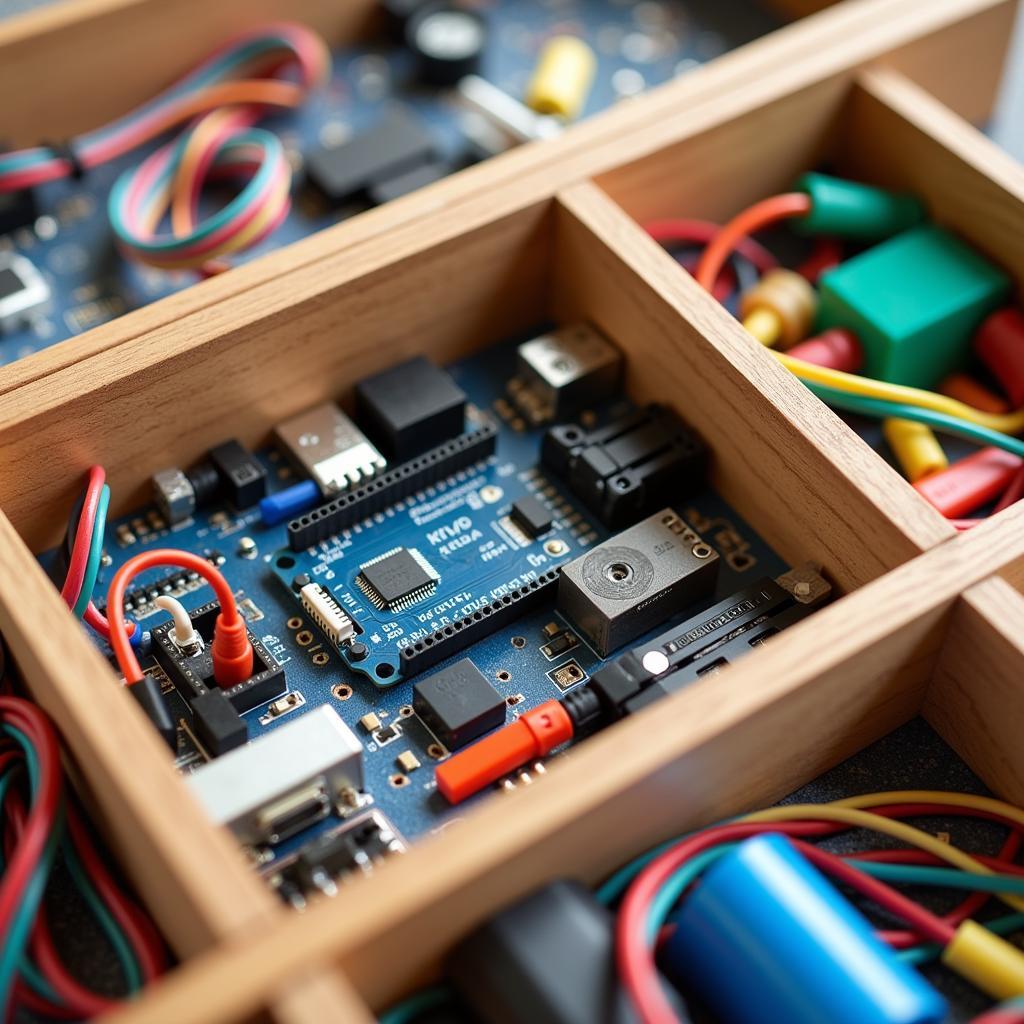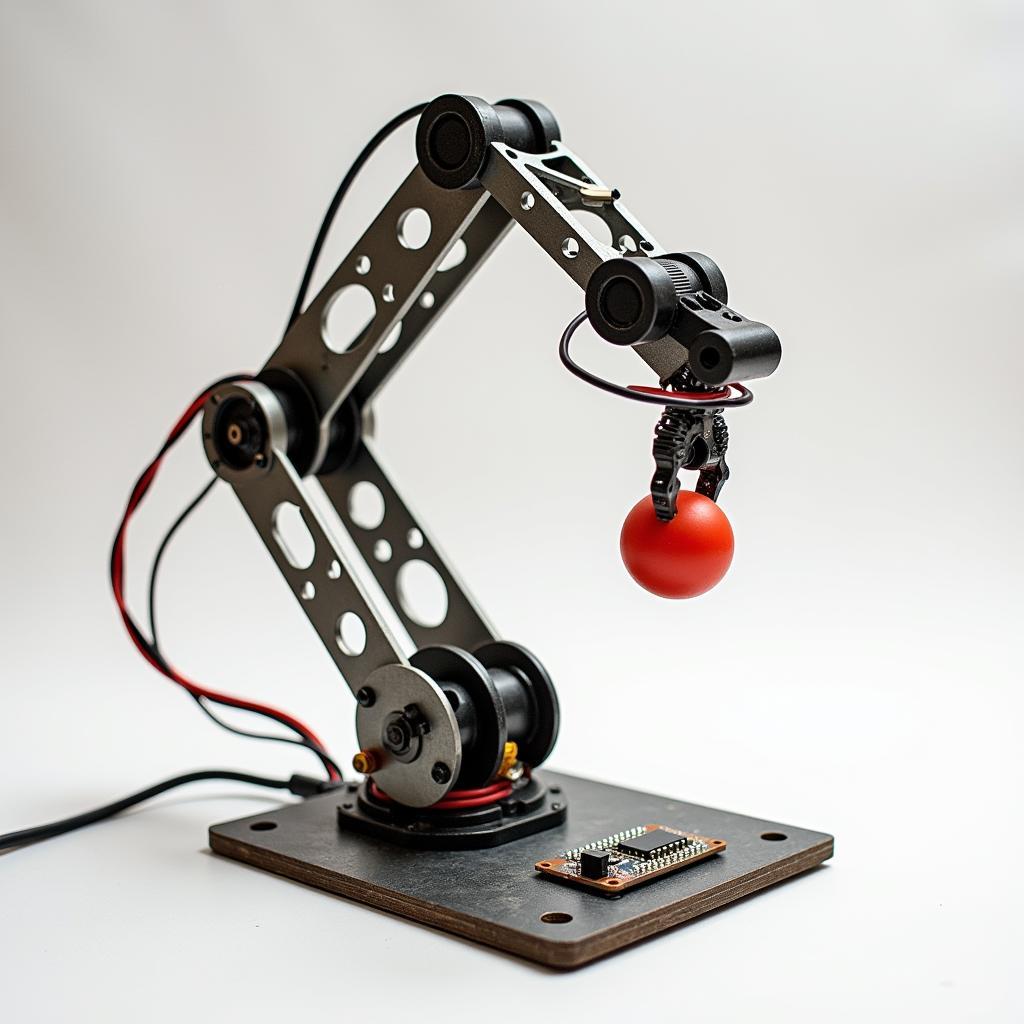Craft Robotics is an exciting fusion of creativity, engineering, and technology that empowers you to design, build, and program your own robots. Whether you’re a seasoned maker or just starting out, craft robotics offers a captivating journey into the world of mechanics, electronics, and coding.
 Craft Robotics Beginner Kit
Craft Robotics Beginner Kit
Why Dive into Craft Robotics?
Craft robotics is more than just assembling pre-designed kits; it’s about bringing your own ideas to life. It’s a playground for innovation, allowing you to explore the principles of robotics while crafting unique and functional machines. Here’s why you should consider embarking on this rewarding journey:
- Unleash Your Creativity: Craft robotics provides a canvas for your imagination. Design robots that reflect your interests, whether it’s a robotic arm that paints, a mobile robot that navigates obstacles, or even a robotic pet that responds to your commands.
- Develop Technical Skills: Through hands-on building and programming, you’ll gain valuable skills in electronics, mechanics, coding, and problem-solving. These skills are highly sought after in various fields, from engineering to art and design.
- Experience the Joy of Making: There’s an immense sense of accomplishment that comes from transforming an idea into a tangible, working robot. The process of building, troubleshooting, and finally seeing your creation come to life is incredibly rewarding.
Getting Started with Craft Robotics
Ready to embark on your craft robotics adventure? Here’s what you need to know:
1. Choose Your Platform
The first step is selecting a robotics platform that suits your skill level and project goals.
- Microcontroller Boards: Arduino and Raspberry Pi are popular choices, offering versatility and a vast online community for support.
- Robotics Kits: These kits provide a structured introduction to robotics, often with pre-designed projects and step-by-step instructions.
- DIY Approach: For a more custom build, gather individual components like motors, sensors, and structural materials. This option offers greater flexibility but requires more research and planning.
2. Gather Essential Tools and Materials
Equip yourself with basic tools like screwdrivers, pliers, wire strippers, and a soldering iron (for more advanced projects). As for materials, consider:
- Structural Components: Wood, acrylic, LEGO bricks, or 3D-printed parts can form the body of your robot.
- Motors: DC motors are commonly used for movement, while servo motors provide precise control over rotation.
- Sensors: Sensors enable your robot to perceive its surroundings. Common sensors include ultrasonic sensors for distance measurement, light sensors for detecting light levels, and line-following sensors for navigation.
 Robotic Arm in Action
Robotic Arm in Action
3. Learn the Basics of Programming
Programming breathes life into your robot, dictating its actions and responses.
- Visual Programming Languages: Scratch and Blockly are beginner-friendly options that use drag-and-drop blocks to represent code.
- Text-Based Languages: Python, C++, and Arduino IDE are more powerful languages that offer greater control and flexibility.
4. Start with Simple Projects
Begin with beginner-friendly projects to grasp fundamental concepts:
- Obstacle-Avoiding Robot: Build a robot that uses an ultrasonic sensor to detect and avoid obstacles in its path.
- Line-Following Robot: Create a robot that follows a black line on a white surface using line-following sensors.
- Light-Seeking Robot: Design a robot that moves towards a light source using light sensors.
5. Experiment and Iterate
Craft robotics is all about experimentation. Don’t be afraid to try new things, make mistakes, and learn from them. Each project will teach you valuable lessons and inspire new ideas.
Craft Robotics: Where Imagination Meets Innovation
Craft robotics empowers you to transform your creative visions into tangible, moving machines. With dedication, experimentation, and a passion for learning, you can build impressive robots that solve problems, entertain, and push the boundaries of your imagination.
Expert Insight:
“Craft robotics is a fantastic gateway into the world of STEM. It encourages creativity, problem-solving, and hands-on learning. The possibilities are limitless!” – Dr. Emily Carter, Robotics Engineer
FAQ
Q: What is the best age to start with craft robotics?
A: Craft robotics can be enjoyed by people of all ages. There are kits and projects suitable for children as young as eight, as well as more advanced options for teenagers and adults.
Q: Do I need prior experience in electronics or programming?
A: Not necessarily! Many resources cater to beginners, providing step-by-step guidance.
Q: Where can I find project ideas and inspiration for craft robotics?
A: Online communities, robotics forums, and platforms like Instructables offer a wealth of project ideas and tutorials.
Need help getting started with craft robotics? Contact us at 0902476650, email us at [email protected], or visit us at 139 Đ. Võ Văn Kiệt, Hoà Long, Bà Rịa, Bà Rịa – Vũng Tàu, Việt Nam. Our team is available 24/7 to assist you.





